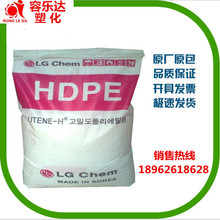19和20世紀見證了傳統生物學技術的穩步發展:遺傳育種技術促進了三大遺傳定律的發現,體外多聚酶鏈式反應(PCR)使得基因克隆、早期基因編輯、人類基因組計劃成為可能……進入21世紀后,生物學更呈現出超摩爾定律的發展速度,新發現與新問題層出不窮,這依賴并推動著生物技術的革新。
2014年Nature Methods雜志十周年特刊中盤點了過去十年對生物學研究影響最為深刻的十大技術,二代測序、CRISPR、單分子技術、蛋白質組學、細胞重編程、光遺傳學、超高分辨率顯微鏡等紛紛上榜。時至今日,這些技術依然活躍在科學發現的最前沿,推動著生命科學與醫學的前進。



本次峰會“未來生物技術”議題的三位嘉賓分別致力于應用二代測序和顯微鏡技術探索基因組物理結構與調控機制、發展基因編輯技術揭示生理病理機制與治療人類疾病、整合多組學數據挖掘傳統生物學“看不見”的信息。
我們的遺傳物質(線性長鏈DNA分子)纏繞在核小體上,并進一步折疊形成染色質,所有染色質共同纏繞形成3維基因組物理結構。基因組物理結構是表觀遺傳的重要組成部分:一個個體由同一套遺傳物質能夠發展成擁有各種組織器官的復雜生物,即伴隨著細胞類型特異的基因組物理結構的調控作用。
斯坦福大學William Greenleaf實驗室專注于利用高通量測序技術和最先進的光學顯微鏡技術,開發新的工具,探測基因組編碼的分子的結構和功能,以及基因組本身的物理壓縮和折疊。2013年,他們研發的ATAC-seq(Assayfor Transposase-Accessible Chromatin with high throughput sequencing)橫空出世并迅速風靡。這是一種研究染色質開放程度的技術,利用Tn5轉座酶對染色質開放區域進行切割并插入接頭,然后將切割后的片段進行建庫測序及后續分析。此外,Greenleaf實驗室還致力于研究核小體定位、轉錄因子在基因組上的結合位點等技術,從各個角度探索基因組物理結構與調控機制。
ATAC-seq原理示意圖(Buenrostro et al., NatureMethods, 2013. “Transposition of native chromatin for fast and sensitiveepigenomic profiling of open chromatin, DNA-binding proteins and nucleosomeposition”)
隨著CRISPR-Cas9技術的誕生,基因編輯異軍突起。這項革命性的技術可以人為插入、去除、修改DNA和RNA序列,精準地編輯生命信息,有望發展出針對遺傳性疾病的全新治療手段。
北京大學魏文勝實驗室致力于發展基因組編輯技術、功能基因組學以及基因治療,并在此基礎上研究癌癥、感染等重大疾病發生機制,為發展高效治療手段提供新的藥物靶點和思路。今年七月,魏文勝實驗室在Nature Biotechnology發表題為“Programmable RNAediting by recruiting endogenous ADAR using engineered RNAs”,公開一種全新的原創RNA編輯技術——LEAPER(LeveragingEndogenous ADAR for Programmable Editing on RNA)。LEAPER是一種RNA單堿基編輯技術,通過使用一小段與目的序列配對的RNA(arRNA)調用內源性ADAR(AdenosineDeaminase Acting on RNA,RNA腺苷脫氨酶),完成由堿基A到G的轉變。人類有許多疾病都是因堿基G到A的突變引起的,而LEAPER的這一作用剛好可以修復這種突變。由于無需引入外源蛋白,LEAPER相比于以往的基因編輯手段可以更加適用于體內治療。
近年來,隨著二代測序的成熟和產業化,組織(bulk)與單細胞(single cell)的基因組、轉錄組、表觀組、染色質開放程度、基因組三維結構等高通量測序方法層出不窮;與此同時,產出的數據量也呈現指數增長糖心vlog入口。如何合理地整合與利用這些來自不同實驗室、不同技術、不同組學、不同組織、不同物種的數據,從中挖掘信息,研究傳統生物學無法揭示的生物問題,顯得至關重要。
紐約大學Rahul Satija實驗室致力于開發計算工具來解決多組學數據整合的問題,他們開發了目前應用最為廣泛的單細胞分析工具——基于R的Seurat,集合了大量單細胞分析算法,能夠去除不同數據集的批次效應,整合多組學的數據,從多個維度來理解單細胞體系。
Stuart et al., Cell, 2019. “Comprehensive Integration of Single-Cell Data"
生物技術正在高通量、高精準度、高整合性、低外源干擾的方向上迅猛發展,為生物學和基礎醫學提供解決問題的手段和方法。在2019未來科學大獎周上,幾位嘉賓將圍繞“未來生物技術”展開討論,讓我們一起走進生物技術的殿堂,領略它的魅力!
Rahul Satija
紐約大學助理教授
紐約基因組中心核心教員
Rahul Satija,紐約大學生物學系助理教授。近年來,Satija教授致力于利用單細胞技術來研究復雜生物學系統中細胞的異質性,他針對單細胞組學數據開發的計算方法,大力推動了單細胞在癌癥免疫、發育等領域的應用。
Abstract:
Single cell transcriptomics (scRNA-seq) has transformed our ability to discover and annotate cell types and states, but deep biological understanding requires more than a taxonomic listing of clusters. As new methods arise to measure distinct cellular modalities, including high-dimensional immunophenotypes, chromatin accessibility, and spatial positioning, a key analytical challenge is to integrate these datasets into a harmonized atlas that can be used to better understand cellular identity and function. Here, we develop a computational strategy to "anchor" diverse datasets together, enabling us to integrate and compare single cell measurements not only across scRNA-seq technologies, but different modalities as well. After demonstrating substantial improvement over existing methods for data integration, we anchor scRNA-seq experiments with scATAC-seq datasets to explore chromatin differences in closely related interneuron subsets, and project single cell protein measurements onto a human bone marrow atlas to annotate and characterize lymphocyte populations. Lastly, we demonstrate how anchoring can harmonize in-situ gene expression and scRNA-seq datasets, allowing for the transcriptome-wide imputation of spatial gene expression patterns, and the identification of spatial relationships between mapped cell types in the visual cortex. Our work presents a strategy for comprehensive integration of single cell data, including the assembly of harmonized references, and the transfer of information across datasets.
William James Greenleaf
斯坦福大學副教授
William James Greenleaf,斯坦福大學醫學院遺傳學系副教授。Greenleaf教授主要的研究方向涵蓋了高通量生物物理學、分子進化、染色質結構等。其發明的DNA可及性檢測技術ATAC-seq,被科學家廣泛應用于癌癥、發育等領域的研究中。
Abstract:
While all cells in the body have the same genomic sequence, cell types display highly diverse phenotypes. Much of the gene regulation that brings about this phenotypic diversity is encoded in chromatin, specifically the regions of the genome that are made accessible the machinery of transcription, and the regions that are packaged and sequestered away. My lab is interested in this physical regulation of the genome, and how this epigenetic layer of regulation both encodes durable "memory" of phenotypic state, and how this layer can change through differentiation and in disease states.
魏文勝
北京大學生命科學學院教授
魏文勝,現任北京大學生命科學學院教授。魏文勝教授致力于真核基因組編輯、功能基因組學的研究,并在此基礎上研究癌癥、感染等重大疾病的發生機制,為發展高效的治療手段提供了新的藥物靶點和思路。
Abstract:
Current tools for targeted gene editing rely on the delivery of exogenous proteins or chemically modified guide RNAs, which may lead to aberrant effector activity, delivery barrier or immunogenicity. We developed a new approach, called LEAPER (leveraging endogenous ADAR for programmable editing of RNA), that employs short engineered ADAR-recruiting RNAs (arRNAs) to recruit native ADAR1 or ADAR2 enzymes to change a specific adenosine to inosine. LEAPER is highly specific, with rare global off-targets and limited editing of non-target adenosines in the target region. As a single-molecule system, LEAPER enables precise, efficient RNA editing with broad applicability for therapy and basic research.
作者:彭嘉慧,北京大學生命科學學院本科生,現在謝曉亮實驗室從事單細胞甲基化測序技術與應用相關研究。
歡迎參加2019未來科學大獎周
與我們一起見證榮耀時刻!
了解未來科學大獎周更多解讀及嘉賓信息
請持續關注未來論壇
糖心vlog
- 上一篇:沒有了
- 下一篇: 糖心vlog:劍橋大學碩博申請(63)


